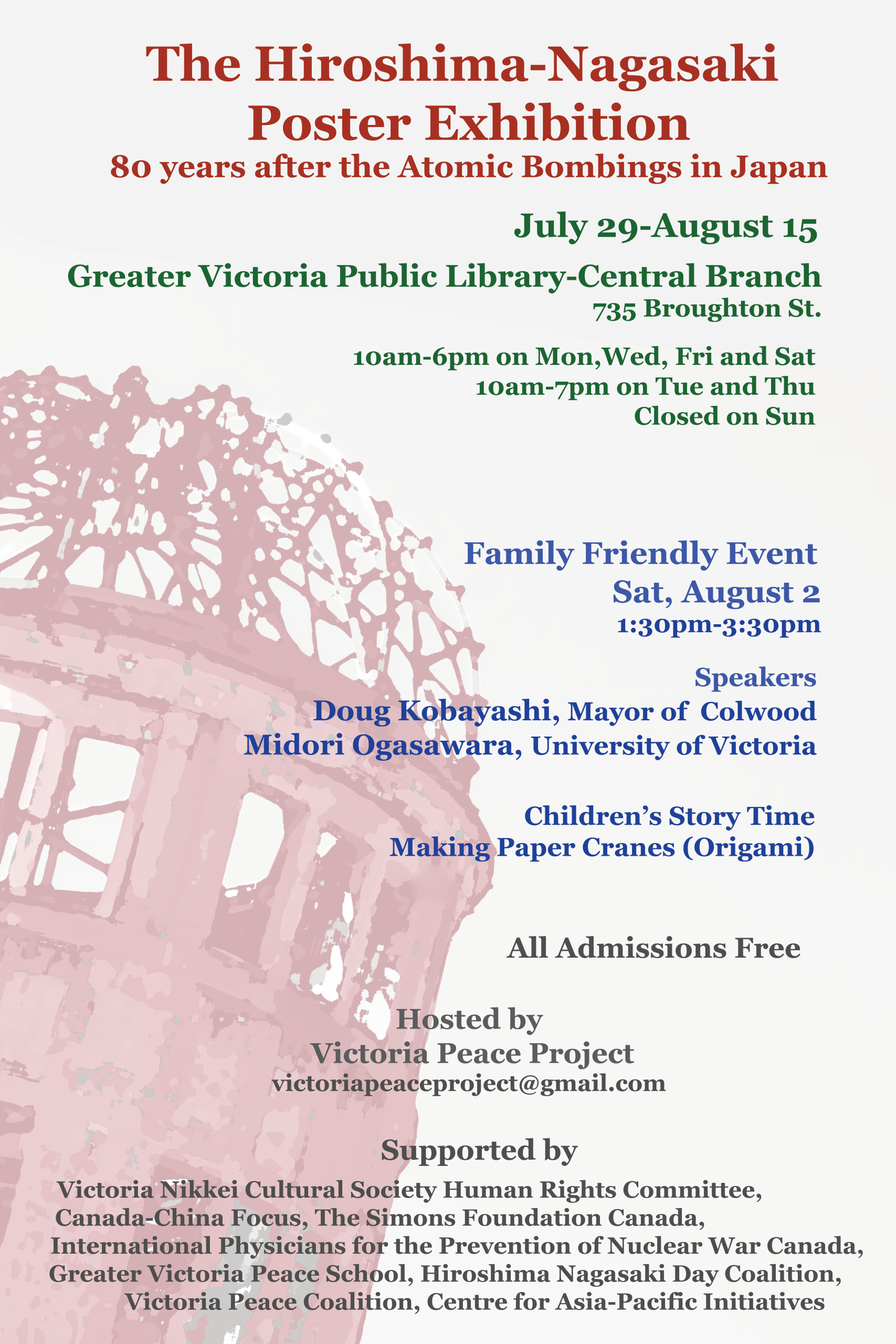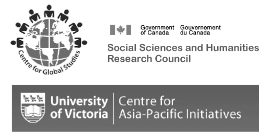The Hiroshima-Nagasaki Poster Exhibition: 80 Years After the Atomic Bombings in Japan

On August 6, 1945, the first atomic bomb was dropped on the city of Hiroshima, Japan, by the United States. Three days after, the second atomic bomb hit the city of Nagasaki. The two bombs together killed more than 210,000 civilians—women, children, seniors, Koreans, Chinese, American prisoners of war, and others—by the end of the year. Since then the intergenerational effects of radiation around the world have continued to kill survivors of the bombings and their descendants. In this exhibition, 30 posters donated by the Hiroshima Peace Memorial Museum tell the stories of how the atomic bombs were created, what happened during the explosions, and why we should be concerned about nuclear war.
This educational event is part of a nationwide initiative to commemorate the 80th anniversary of Hiroshima-Nagasaki atomic bombings, in 10 cities across Canada: Victoria, Vancouver, Edmonton, Calgary, Sudbury, Ottawa, Toronto, Montreal, Fredericton, and Halifax (for more information, please visit: https://simpli.events/e/hiroshima-nagasaki-80-years). This initiative is led by Setsuko Thurlow, Canada’s nuclear disarmament advocate, who lives in Toronto. Setsuko, who is 93, is a Hiroshima survivor, and the recipient of the 2017 Nobel Peace Prize, representing the International Campaign to Abolish Nuclear Weapons (ICAN). ICAN spearheaded the United Nations Treaty on the Prohibition of Nuclear Weapons, which came into effect in 2021. Japan’s atomic bomb survivors’ association, Nihon Hidankyo, was also awarded the Nobel Peace Prize in 2024, for their steadfast efforts in sharing their difficult experiences to strengthen public support for a nuclear-free, peaceful world.
Hibakusha, the people who were exposed to radiation, are not limited to Japan, but also live in the United States, Canada, Australia, Pacific islands, and other parts of the world where nuclear weapons have been produced or tested. But in these countries damages to health have not been openly discussed and the images of Hiroshima and Nagasaki have been hidden from public view. Setsuko and other hibakusha let the public know the realities of nuclear effects on human lives and raise more awareness on the Treaty on the Prohibition of Nuclear Weapons, which Canada, Japan, and other powerful countries have not yet signed.
This exhibition is an outcome of collaborative efforts by different groups: Victoria Peace Coalition, Victoria Nikkei Cultural Society Human Rights Committee, Canada-China Focus, Simons Foundation Canada, International Physicians for the Prevention of Nuclear War Canada, Greater Victoria Peace School, Hiroshima Nagasaki Day Coalition, and Centre for Asia-Pacific Initiatives at University of Victoria. As peace is the minimum condition to everyone’s happiness, especially for children, youth, and future generations, this initiative is supported by Victoria’s individual artists, educators, and faith communities, too. We are thankful to the Greater Victoria Public Library and all these partners for making this exhibition happen, working together to move forward a nuclear-free and war-free future.
Victoria Peace Project

 Instagram
Instagram